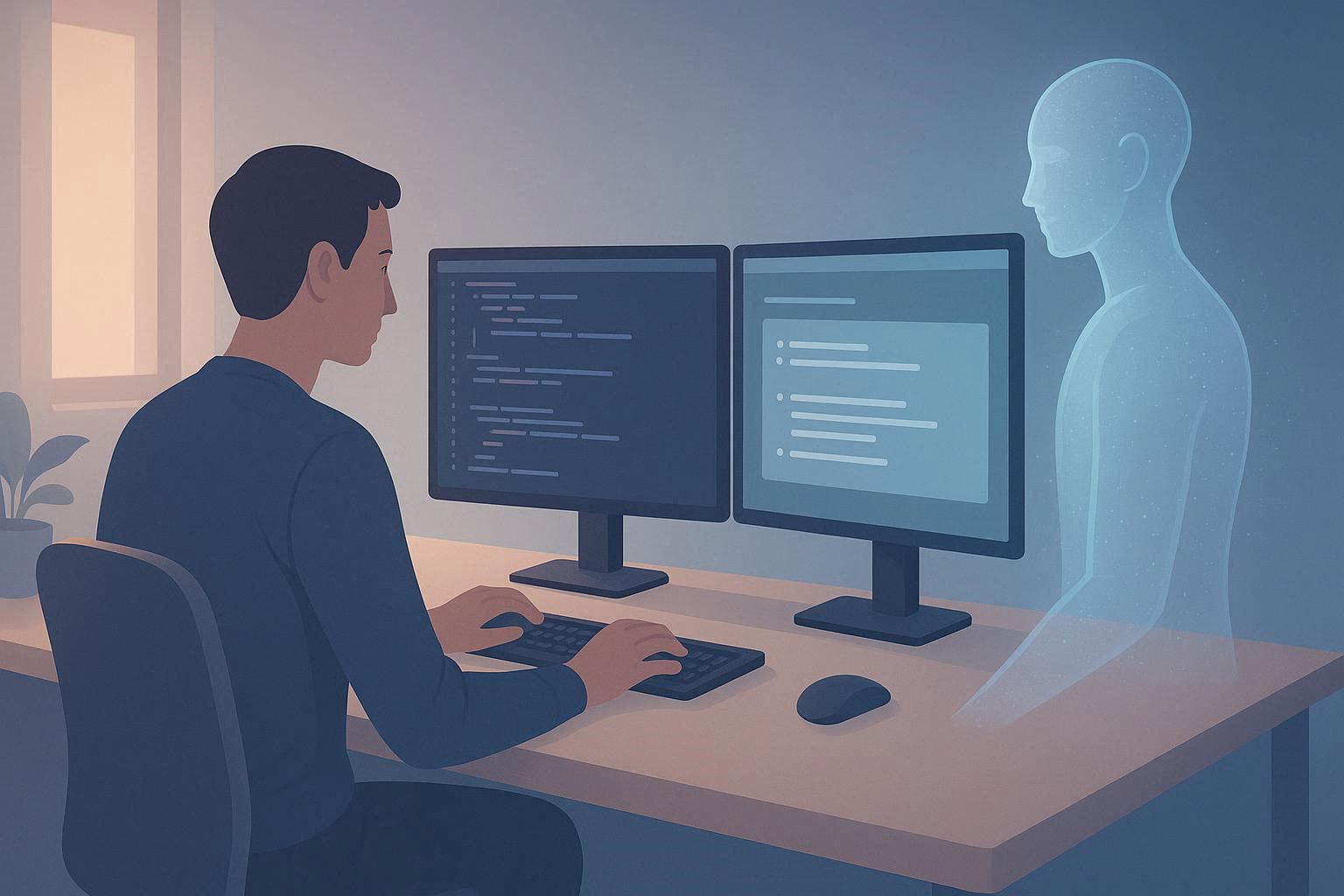Or: Convincing Myself Our AI Overlords Aren’t Replacing Us (Yet)
Introduction
After 20 years in software development, I’ve seen the landscape shift – from debugging with print statements to navigating version control debates, and leaning on Stack Overflow like a trusted colleague. Now, a new kind of collaborator has joined the team: AI.
What I’ve come to realize is that the most effective way to work with AI isn’t just as a tool, but as a partner. Sometimes it feels like a junior developer, sometimes a peer, and occasionally, it offers insights like a mentor. The key isn’t just to use it – it’s to engage with it mindfully: with awareness, intention, and a willingness to learn.
The Junior Developer
For routine tasks – writing boilerplate, refactoring small functions, or translating legacy code – AI often behaves like a junior dev: quick, eager, and ready to help. But it doesn’t know your project’s history, your team’s unwritten rules, or the subtle decisions that shape your architecture.
That’s where your role shifts into mentorship. You guide it with clear instructions, review its output, and offer corrections. And in doing so, something interesting happens: you sharpen your own thinking. You become more deliberate, more precise – and often, the code improves because of it.
But there’s a caution here too. We’ve all heard about new developers who lean too heavily on AI, generating code without understanding the logic behind it. That kind of reliance can slow down growth and weaken problem-solving skills. So even in these simple tasks, mindfulness matters – not just in how we use AI, but in how we teach others to use it.
The Peer
Then there are times when AI feels like a peer – someone to bounce ideas off, to help you think through design decisions.
- “Would a factory pattern make sense here?”
- “Is caching better at the data access layer or the business logic layer?”
And AI responds with options, trade-offs, and sometimes fresh perspectives I hadn’t considered. AI expanded my judgment, I didn’t outsource it. These moments feel less like automation and more like a thoughtful conversation.
Working with AI in this way is a kind of dialogue. You bring your experience; it brings breadth. Together, you explore possibilities more quickly and with greater clarity, but it is up to you to maintain your discipline.
The Mentor – and the Blind Spots
Occasionally, AI surprises me.
It points out an edge case I missed. Suggests a cleaner approach. Offers a naming convention that feels just right. These moments are subtle, but they remind me that this isn’t just a tool – it’s a collaborator that can elevate my work.
“You don’t know what you don’t know.”
It’s a humbling truth. No matter how experienced you are, there are always blind spots – edge cases, patterns, or perspectives that slip past unnoticed. That’s where AI quietly shines.
It doesn’t eliminate those blind spots, but it helps light them up. It acts like a second set of eyes – one trained on countless examples, idioms, and patterns – offering insights we might not have thought to look for.
And when that happens, it’s not just about better code. It’s about growing as a developer – expanding your awareness, deepening your understanding, and staying open to learning.
The Art of Prompting
Working with AI is like pair programming with someone who doesn’t share your context. Your prompts are your voice – your way of communicating intent.
A vague prompt like “Refactor this for readability” might get you halfway there.
But something like “Refactor this to separate business logic from data access, keep naming consistent, and preserve test coverage” – that gets results.
Prompting is a skill. And like any skill, it deepens with practice. The more mindful you are in how you ask, the more meaningful the response becomes.
Conclusion: A Partnership, Not a Replacement
AI is reshaping how we write code through collaboration, not replacement
When I treat it like a pair programmer, I get the best results. It becomes:
- The junior I mentor
- The peer I brainstorm with
- The mentor that occasionally surprises me
- The assistant that helps me name things clearly
This is the new rhythm of software development. AI doesn’t replace us – it elevates us, when we choose to work with it mindfully.
For now, anyway.


Leave a Reply